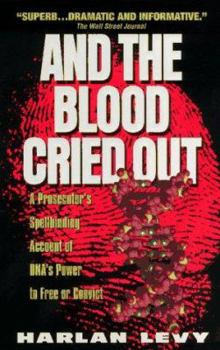And the Blood Cried Out: A Prosecutor's Spellbinding Account of DNA's Power to Free or Convict
Select Format
Select Condition 
Book Overview
Many of the most high-profile cases of our time, including the World Trade Center bombing and the O.J. Simpson trial, have hinged on DNA evidence. This book is the first book to examine the... This description may be from another edition of this product.
Format:Mass Market Paperback
Language:English
ISBN:0380730618
ISBN13:9780380730612
Release Date:January 1997
Publisher:Avon Books
Length:266 Pages
Weight:0.35 lbs.
Dimensions:0.8" x 4.2" x 6.9"
Customer Reviews
1 rating
A Tutorial in DNA Evidence
Published by Thriftbooks.com User , 17 years ago
Harlan Levy developed his expertise in DNA evidence while working in the Manhattan District Attorney's Office. Chapter 1 explains how detectives elicit confessions from suspects. They cause the subject to abandon all hope and make the suspect think they must confess. [Psychological conditioning? If a person is convinced of their guilt won't they confess?] This technique is explained on pages 2 and 3. Three kinds of evidence are needed to convict (p.12); one alone is insufficient to convict. False confessions are the result of coercion or the susceptibility of a weak or frightened suspect. Pressure can result in a confession (p.13). Details of a crime can be fed to a suspect (p.14). But the corroboration of DNA evidence can overcome doubts (p.15). "DNA evidence can promote a more just society" in punishing the guilty and exonerating the innocent (Chapter 2). Levy explains how he was drawn to public service. It is "profoundly idealistic and socially redeeming" and emotionally rewarding (p.23). There was an explosion of violent crime from the 1980s. [No mention of Reagan's economic policies and growing gun prohibition.] DNA can help solve murders and rapes. [Isn't prevention better than a cure?] Levy explains the reason for regulating police and prosecutorial behavior (p.24): it protects people from the power of the state. Is a trial "a search for the truth" (p.25)? Levy resigned from the DA's Office to write this book and tell about DNA analysis. Most human genes are identical, less than 1% is different. Research into genetic diseases led to knowledge about DNA. A person's DNA pattern is found in all the cells of the body (p.29). The repetitive pattern of DNA was discovered in 1984 and patented (p.31). Can an innocent suspect confess to a murder? Yes (p.35)! [This case was described by Joseph Wambaugh in his book "The Blooding".] Chapter 3 tells of the conflicts in setting the standards for reliable DNA testing (p.68). There was a problem with the DNA evidence in the Central Park Jogger case: it did not match the suspects, a group of teenagers out to commit crimes. But only a few of the gang were caught, there were unknown suspects. [Years later there would be new revelations on this crime.] Chapter 5 tells how DNA freed the innocent and convicted the guilty. Chapter 6 discusses the FBI's racial breakdown of DNA evidence and its assumptions (p.128). Would a Federal official try to suppress scientific knowledge (p.136)? Chapter 7 tells how DNA solved other crimes. Chapter 8 explains Polymerase Chain Reaction and its use in DNA testing. It was used to convict a modern "Jack the Strangler" (p.178). A newer form of PCR led to a pardon of an innocent man (p.185). Chapter 9 discusses the formidable challenge to O. J. Simpson because of the blood evidence found in his car and home (p.187). This case seemed foolproof. The best defense lawyers create a theory that supports the client's innocence better than the prosecution's theory of guilt. This is hard





